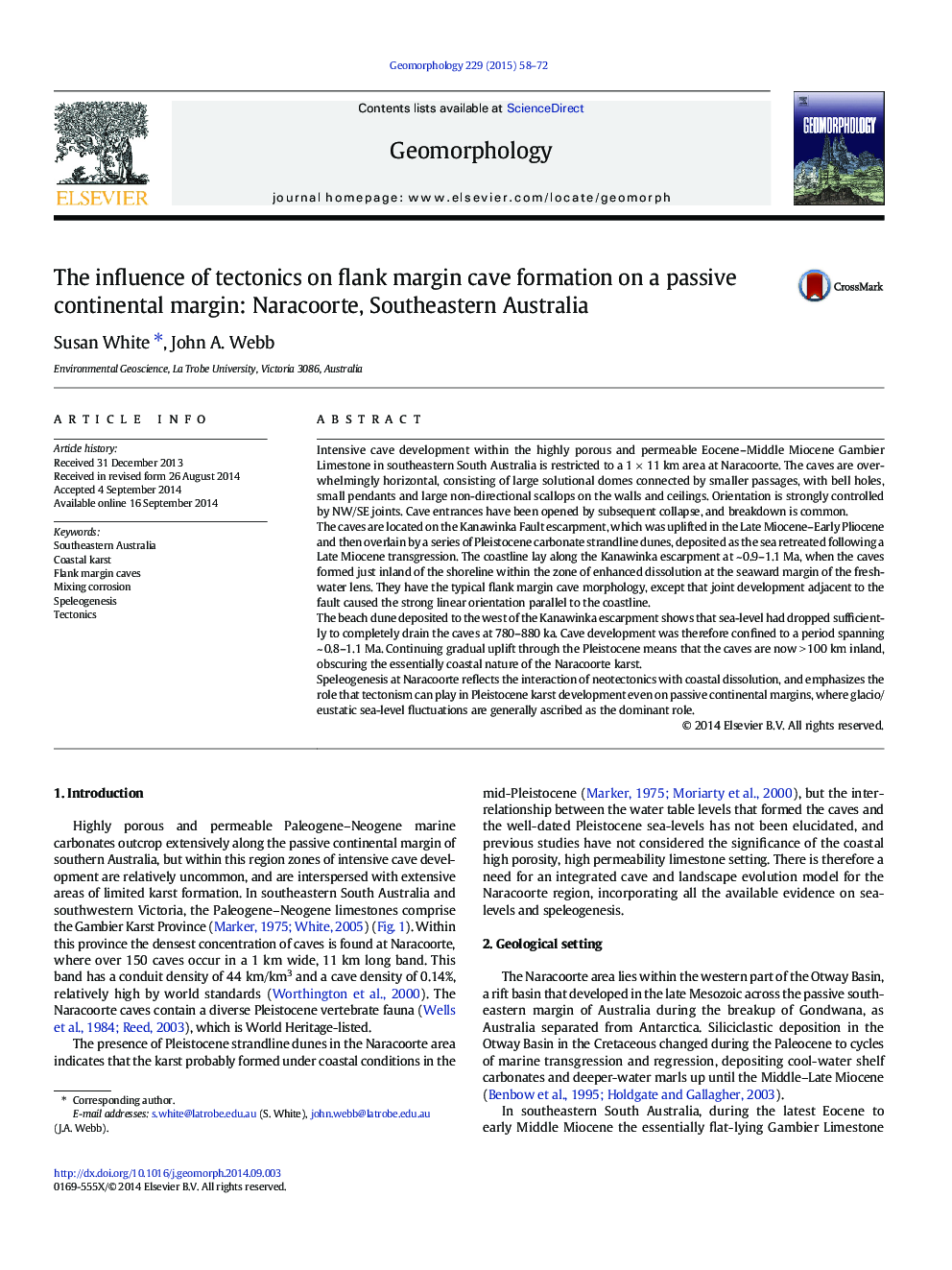| Article ID | Journal | Published Year | Pages | File Type |
|---|---|---|---|---|
| 6432361 | Geomorphology | 2015 | 15 Pages |
â¢The karst landscape at Naracoorte Australia is formed in a coastal environment.â¢The landscape is the result of tectonic uplift, fluctuating sea levels and karst dissolution.â¢Cave and karst characteristics are consistent with those of Flank Margin Caves.â¢Tectonic uplift has obscured the essentially coastal nature of the Naracoorte karst.â¢The karst formed between 750 ka and 1.1 Ma not the late Pleistocene.
Intensive cave development within the highly porous and permeable Eocene-Middle Miocene Gambier Limestone in southeastern South Australia is restricted to a 1Â ÃÂ 11Â km area at Naracoorte. The caves are overwhelmingly horizontal, consisting of large solutional domes connected by smaller passages, with bell holes, small pendants and large non-directional scallops on the walls and ceilings. Orientation is strongly controlled by NW/SE joints. Cave entrances have been opened by subsequent collapse, and breakdown is common.The caves are located on the Kanawinka Fault escarpment, which was uplifted in the Late Miocene-Early Pliocene and then overlain by a series of Pleistocene carbonate strandline dunes, deposited as the sea retreated following a Late Miocene transgression. The coastline lay along the Kanawinka escarpment at ~Â 0.9-1.1Â Ma, when the caves formed just inland of the shoreline within the zone of enhanced dissolution at the seaward margin of the freshwater lens. They have the typical flank margin cave morphology, except that joint development adjacent to the fault caused the strong linear orientation parallel to the coastline.The beach dune deposited to the west of the Kanawinka escarpment shows that sea-level had dropped sufficiently to completely drain the caves at 780-880Â ka. Cave development was therefore confined to a period spanning ~Â 0.8-1.1Â Ma. Continuing gradual uplift through the Pleistocene means that the caves are now >Â 100Â km inland, obscuring the essentially coastal nature of the Naracoorte karst.Speleogenesis at Naracoorte reflects the interaction of neotectonics with coastal dissolution, and emphasizes the role that tectonism can play in Pleistocene karst development even on passive continental margins, where glacio/eustatic sea-level fluctuations are generally ascribed as the dominant role.
